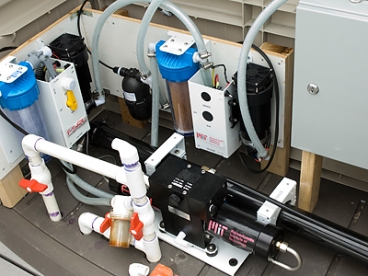The portable system, which uses the principle of reverse osmosis to produce water, could also be used in remote areas where supplying energy and clean water can be logistically complex and expensive, such as desert locations or farms and small villages in developing countries.
A group led by Steven Dubowsky, a professor in MIT’s Department of Mechanical Engineering, built a small prototype of the system to test algorithms they had developed to control it.
The algorithms instruct the system’s computer to change certain variables, such as the power of the pump or the position of the valves, to maximise water output in response to changes in sunshine, temperature and water demand.

The researchers have since demonstrated that the prototype is capable of producing 80 gallons of water a day in a variety of weather conditions. They estimate that a larger version of the unit, which would cost about $8,000 (£5,000) to construct, could provide about 1,000 gallons of water per day.
Dubowsky said that one C-130 cargo aeroplane could transport two dozen desalination units - enough to provide water for 10,000 people.

April 1886: the Brunkebergs tunnel
First ever example of a ground source heat pump?